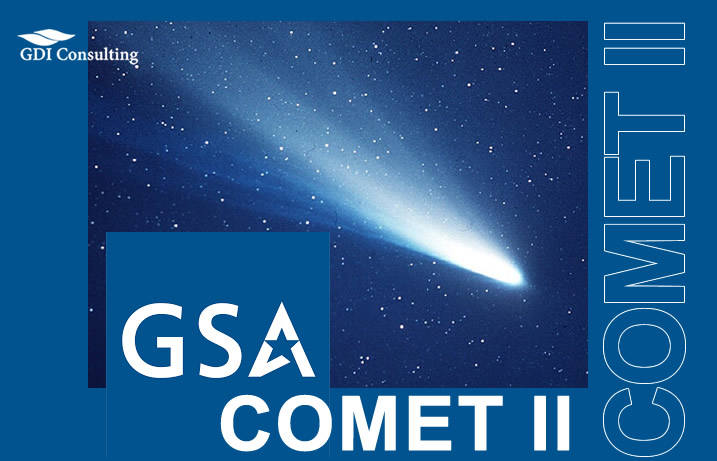GSA COMET II in a Nutshell:
Item |
Details |
|---|---|
| Solicitation: |
CIO Modernization and Enterprise Transformation II (COMET II)
|
| Agency: |
General Services Administration Information Technology (GSA IT)
|
| Solicitation Number: | TBD |
| NAICS Code: |
541511
Custom Computer Programming Services
Size Standard: $34 million annual receipts |
| Status: | Pre-RFP |
| Important Dates: |
|
| Contract Period: | 5 year(s) base |
| Type of Contract: | Firm Fixed Price, Task Order |
| Contract Vehicle: | GSA Consolidated Multiple Award Schedule |
| Competition Type: | Small Bus Set-Aside Full and Open / Unrestricted |
| Type of Award: | Task / Delivery Order |
| Number of Awards: |
NA
|
| Maximum Contract Ceiling Value: | Over $1 Billion |
Solicitation Resources:
| Item | Link |
|---|---|
| COMET II Page on AcquisitionGateway.gov | Webpage |
GDIC Related Content:
| Resource | Name / Link |
|---|---|
| GDIC Article |
How to Win the COMET II |
| GDIC Services |
Government Proposal Development |
| GDIC Services |
GSA Schedule Consulting Services |
How can GDIC Help?
GDIC specializes in providing comprehensive proposal writing and review services tailored to the GSA solicitations. Our team of experts, who are well-versed in GSA contracting, offer meticulous support throughout the proposal process. We ensure your proposal is not only compliant with all solicitation requirements but also compelling and competitive. Our services include:
- Initial Consultation: Understanding your business and aligning your proposal with the GSA COMET II’s objectives.
- Document Preparation: Assisting in the creation of all required documents, including technical volumes and subcontracting plans.
- Review and Compliance Checks: Ensuring your proposal meets all format, submission, and regulatory guidelines before submission.
- Submission Support: Guiding you through the electronic submission process to guarantee a timely and correct filing.
With GDIC, elevate your chances of securing GSA COMET II Solicitation contracts through a strategic, well-crafted proposal that stands out.

